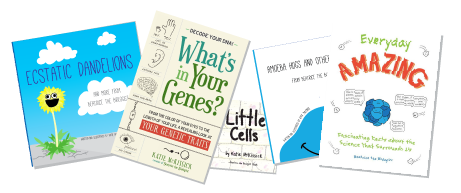Plastic
Plastics haven’t been around for very long–about 50 years. What’s scary is that we don’t really know what will happen to all the plastics we’ve produced over long periods of time. What we are starting to realize, though, is that plastics don’t really go anywhere.
The problem is that plastics are not what you’d call a “natural” material. That means they haven’t been around very long, which also means that there is nothing that will break them down. Think about the other materials people come into contact with on a daily basis. We live in homes made of wood or maybe rocks or metals of some sort (brick, cement). We drive cars made of metal. We write on paper. We use forks made of metal, glasses made of…glass, and plates made of ceramics (basically more metal). Obviously, we also interact with food–plant and animal products.
Where do these things go when we are done with them?
The food we eat is excreted as waste that is broken down by lovely bacteria. The food we throw away is eaten by other takers–fungus, bacteria, insects, etc. Sometimes we throw away food because the fungus starts eating our food before we even got a chance. Moldy bread, anyone? Yum!
The wood of our homes and the paper we write on will eventually biodegrade. A combination of elements and microorganisms will break it down and that material will be recycled naturally. The tree that became the paper will become the soil that supports the next tree. Think of the “Circle of Life” song from the Lion King.
The metals we use (brick, cement, iron, steel, etc.) in every day life don’t biodegrade exactly, but they can be broken down and weathered, and they go back to form the sand, the ground, the earth. Not a big problem.
Plastics, on the other hand, don’t biodegrade. They don’t break down to form anything useful. They just… they just… they just keep being plastic. They don’t go anywhere. This is a problem. Nature is all about recycling and reusing. Nothing goes to waste.
 Plastics are forever. They don’t break down; the material doesn’t return to the earth. All plastics seem to do is end up in rivers, lakes, and the ocean. Clogging waterways, choking animals, and generally getting in the way.
Plastics are forever. They don’t break down; the material doesn’t return to the earth. All plastics seem to do is end up in rivers, lakes, and the ocean. Clogging waterways, choking animals, and generally getting in the way.
Plastics exposed to direct sunlight seem to break down–but the particles aren’t changing. It’s just breaking into smaller and smaller pieces. What will happen if plastics break into millions of tiny particles instead of one bottle? Think about it this way–what would be easier to control, a glass bottle, or a shattered glass bottle? That seems to be all plastics do, break into smaller pieces. What if they get small enough to get into the blood streams of aquatic animals? Will it be poisonous? Who knows.
After 50 years of finding better ways to produce plastics, and more ways to use them, we need to spend just as much time and energy trying to stop using them.
- Buy reusable grocery bags, and if you forget them, ask for paper bags, not plastic. We can replant trees, but we can’t undo the plastics.
- Stop drinking bottled water. Buy a metal canteen and fill it with water every day.
- Use tin foil instead of cling wrap.
- Be sure to recycle the plastic products you do use.

“Paper or plastic? No, canvas!”










